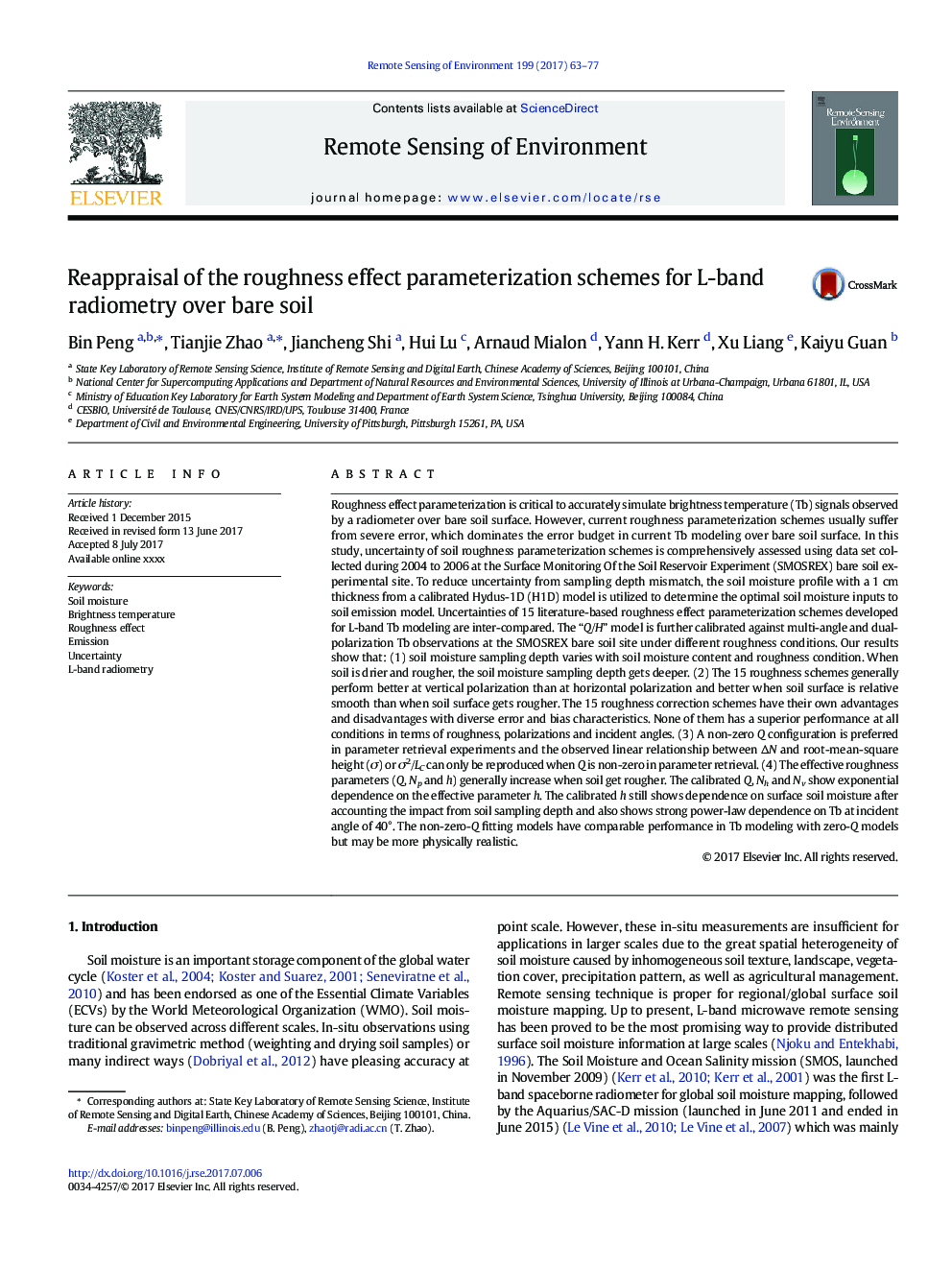| کد مقاله | کد نشریه | سال انتشار | مقاله انگلیسی | نسخه تمام متن |
|---|---|---|---|---|
| 5754833 | 1621201 | 2017 | 15 صفحه PDF | دانلود رایگان |
عنوان انگلیسی مقاله ISI
Reappraisal of the roughness effect parameterization schemes for L-band radiometry over bare soil
ترجمه فارسی عنوان
بررسی مجدد طرح های پارامتر زاویه ای برای رادیومتری ل باند بر روی زمین لخت
دانلود مقاله + سفارش ترجمه
دانلود مقاله ISI انگلیسی
رایگان برای ایرانیان
کلمات کلیدی
رطوبت خاک، دمای روشنایی، اثر ناراحتی، انتشار، عدم قطعیت، رادیومتری باند ل
موضوعات مرتبط
مهندسی و علوم پایه
علوم زمین و سیارات
کامپیوتر در علوم زمین
چکیده انگلیسی
Roughness effect parameterization is critical to accurately simulate brightness temperature (Tb) signals observed by a radiometer over bare soil surface. However, current roughness parameterization schemes usually suffer from severe error, which dominates the error budget in current Tb modeling over bare soil surface. In this study, uncertainty of soil roughness parameterization schemes is comprehensively assessed using data set collected during 2004 to 2006 at the Surface Monitoring Of the Soil Reservoir Experiment (SMOSREX) bare soil experimental site. To reduce uncertainty from sampling depth mismatch, the soil moisture profile with a 1 cm thickness from a calibrated Hydus-1D (H1D) model is utilized to determine the optimal soil moisture inputs to soil emission model. Uncertainties of 15 literature-based roughness effect parameterization schemes developed for L-band Tb modeling are inter-compared. The “Q/H” model is further calibrated against multi-angle and dual-polarization Tb observations at the SMOSREX bare soil site under different roughness conditions. Our results show that: (1) soil moisture sampling depth varies with soil moisture content and roughness condition. When soil is drier and rougher, the soil moisture sampling depth gets deeper. (2) The 15 roughness schemes generally perform better at vertical polarization than at horizontal polarization and better when soil surface is relative smooth than when soil surface gets rougher. The 15 roughness correction schemes have their own advantages and disadvantages with diverse error and bias characteristics. None of them has a superior performance at all conditions in terms of roughness, polarizations and incident angles. (3) A non-zero Q configuration is preferred in parameter retrieval experiments and the observed linear relationship between ÎN and root-mean-square height (Ï) or Ï2/LC can only be reproduced when Q is non-zero in parameter retrieval. (4) The effective roughness parameters (Q, Np and h) generally increase when soil get rougher. The calibrated Q, Nh and Nv show exponential dependence on the effective parameter h. The calibrated h still shows dependence on surface soil moisture after accounting the impact from soil sampling depth and also shows strong power-law dependence on Tb at incident angle of 40°. The non-zero-Q fitting models have comparable performance in Tb modeling with zero-Q models but may be more physically realistic.
ناشر
Database: Elsevier - ScienceDirect (ساینس دایرکت)
Journal: Remote Sensing of Environment - Volume 199, 15 September 2017, Pages 63-77
Journal: Remote Sensing of Environment - Volume 199, 15 September 2017, Pages 63-77
نویسندگان
Bin Peng, Tianjie Zhao, Jiancheng Shi, Hui Lu, Arnaud Mialon, Yann H. Kerr, Xu Liang, Kaiyu Guan,
